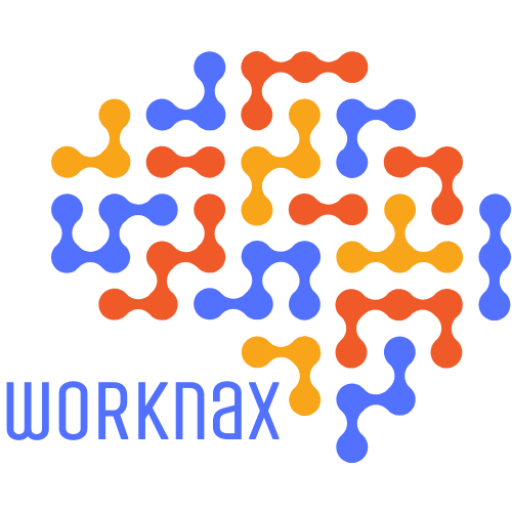Anúncios
Career Boost guide shows you how to turn fast changes in the U.S. job market into clear, usable moves. Do you know which skills hiring managers want now and how to test them quickly?
You will get short, practical tactics for steady professional growth. Use SMART goals and quick reviews to stay aligned with a shifting industry. Add focused learning—online courses, workshops, and trade reading—to keep your skills current.
Expect real, safe steps, not hype. Try the Eisenhower Matrix to sort priorities and Merlin Mann’s inbox detox to regain focus. Prepare an outcome-focused resume and keep references ready so you can move when opportunities appear. Mentors, targeted courses, or a coach can speed learning, but results vary by person and role.
Introduction: Why a Career Boost guide matters now in the U.S. job market
Right now, rapid tech adoption and shifting skill needs are reshaping how people advance at work. Employers judge impact differently, and internal moves are becoming a real source of opportunity.
This list-style approach gives you clear, short steps you can try today. You get quick wins—like an inbox detox—and habits that support long-term career development.
What’s changed: Skills shifts, tech adoption, and internal mobility
Tools, data, and automation push roles to evolve. That means continuous learning and balanced technical plus soft skills matter more than ever.
How a listicle helps: Clear steps, quick wins, and long-term habits
The format breaks actions into practical moves. You can set SMART goals, join a workshop, or network on LinkedIn in small chunks that fit your schedule.
What you’ll get: Real examples, safe practices, and actionable next steps
“Small, tested practices help you move forward safely and steadily.”
You’ll see examples—workshops that build leadership, short projects that prove skill—and safe, repeatable actions to try without risky bets.
- Stay informed: follow industry news and communities.
- Build relationships: aim for useful conversations and follow-through.
- Protect balance: avoid burnout so you can keep improving.
Set SMART goals that match the market and your strengths
Clear, measurable goals help you move toward the next role without guessing. Use SMART to make direction simple: Specific, Measurable, Achievable, Relevant, Time-bound.
Quick SMART example: Within 9 months, lead one cross-functional project that improves onboarding time by 20% and collect two manager testimonials.
Self-assessment to find fit
Map strengths, values, and interests to target roles. Note what you enjoy and what you avoid. Compare that list to typical job qualifications.
Plan milestones and reviews
Research needed skills and management capabilities. Break them into measurable steps and dates. Limit scope to two high-impact areas so goals stay achievable.
- Volunteer to lead a cross-functional project.
- Attend two management workshops in six months.
- Request monthly feedback from your manager.
Track progress and capture evidence
Use biweekly check-ins and a quarterly reset to keep goals aligned with new opportunities. Link each milestone to career advancement signals hiring managers notice, such as outcomes delivered or teams influenced.
Tip: For more examples of SMART statements, see SMART goal examples.
Invest in continuous learning to stay competitive
Treat ongoing learning as a practical habit that widens your options at work. Pick one concrete path each quarter so learning stays focused and manageable.
Upskilling and reskilling: courses, workshops, and news
Choose reputable providers and match a course to a specific skill the industry values. Balance short online classes with hands-on workshops and regular reading.
Tech-forward skills: AI, automation, and new languages
Try a small AI or automation project to learn limits and trade-offs. If you code, pick one new language or framework and apply it to a tiny work task.
Conference strategy: learn, connect, follow up
Plan conference time with intent: target two sessions to learn, meet three people, and send one follow-up note to each with a useful resource.
- Pick one learning path per quarter tied to measurable development.
- Set a light news habit: two trusted publications and one analyst.
- Translate learning into a small project and capture measurable results.
- Track how new skills create opportunities like pilots or task-force invites.
Keep expectations realistic: select reputable courses, favor hands-on work, and schedule study blocks so learning steadily helps you advance.
Build a professional network that actually opens doors
A practical network gives you options when opportunities appear. Start with simple, human steps: tidy your contacts, engage where people already gather, and prioritize the relationships that matter most to your progress.
Engage online: LinkedIn presence and thoughtful outreach
Polish your LinkedIn headline and summary so people know what you do. Comment with short, useful insights—add a fact, a question, or a link that deepens the post.
Post one useful observation weekly and reply to two threads. When you reach out, share a resource or an idea before you ask for anything.
Mine your inbox and business cards
Scan old messages and unprocessed cards. Add missed contacts to your system and tag them by context so you remember why you met.
Send a short check-in—“hi, saw your piece on X; thought you’d like Y”—to rekindle ties without pressure.
Top 20 relationships and being useful
Create a Top 20 list of people who can sponsor, refer, or advise. Keep light touchpoints: congrats notes, article links, or event invites.
“Small, consistent gestures build trust faster than occasional grand asks.”
- Optimize social media by sharing opinions and asking curious questions.
- Track outcomes like introductions or collaboration ideas to measure how your network supports your career.
- Be interesting—offer value first and stay genuinely curious about other people’s work.
Find mentors and become a great mentee
A trusted mentor can shorten your learning curve and open useful doors.
Identify mentors inside and outside your organization
List people whose work you respect. Look for senior staff within organization walls and for experts in your field outside it.
Prioritize those who match the next skills you need and the direction of your career.
Make a clear, respectful ask and listen
Request a short intro call or quarterly check-in and explain what you hope to learn. Come prepared with focused questions and a brief example of where you’re stuck.
When you receive feedback, listen actively and thank them for specifics. Record their suggestions so you can act on them.
- Offer one way to help back—share an article or a connection.
- Keep boundaries: limit requests and respect their time.
- Diversify mentors: include someone outside your function for broader leadership perspective.
“Good mentorship expands your network and turns feedback into measurable development.”
Follow up: reflect on advice, report progress, and keep a simple log so mentors see impact and your growth continues.
Strengthen your personal brand and thought leadership
Show your work: clear profiles and small public analyses make it easier for others to trust your skills. Build a credible online presence with professional profiles, a focused portfolio, and concise contact details.

Showcase expertise: profiles, portfolio, blog, and talks
Align your profiles and portfolio to highlight outcomes and the skills your industry values. Include short project summaries that state the problem, your role, and measurable results.
Example: a designer posts three case recaps that show reduced onboarding time, improved conversion, and client feedback.
Publish ideas: white papers, analyses, and guest posts
Publish one small idea at a time—short analysis, how-to, or case recap. This builds trust without overpromising results.
- Monthly post, quarterly talk or webinar, and portfolio updates as a simple cadence.
- Cross-post on social media, tailoring format while keeping voice and visual identity consistent.
- Join conversations with data points or frameworks that help your professional network, not just self-promotion.
Consistency across platforms builds trust
Track brand signals like profile views, collaboration invites, or speaking requests to measure career advancement traction. Avoid hype, cite sources when needed, and focus on real takeaways people can apply.
“Small, regular contributions win trust faster than occasional grand statements.”
- Align profiles to outcomes and clear contact information.
- Publish useful, bite-sized work and update your portfolio regularly.
- Engage thoughtfully on media and social media to amplify reach.
Master time management and organization for sustained performance
A simple reset of your inbox and calendar can free enough focus to do your best work. Use a short, practical routine you can repeat each quarter so small gains compound.
Inbox detox: Reduce overwhelm to regain focus
Schedule one full session to do an inbox detox. Create a “2023” (or current year) folder and move everything into it. Then process new mail only and apply three rules: delete, defer, or do.
Reset tip: After the move, process the old folder in timed batches and archive or tag actionable items for your task list.
Prioritization frameworks and deep-work blocks
Use the Eisenhower Matrix weekly to label tasks by urgency and importance. This reduces stress and protects focus for meaningful projects.
Block two focus windows on your calendar and treat them like meetings. Turn off nonessential notifications, batch communications, and set meeting-free hours at your workplace.
- Create one task list, one calendar, and one notes app to avoid fragmentation in your organization.
- Review weekly to close loops, capture wins, and adjust plans so your management habits support your career goals.
- Communicate availability with your team to set expectations and reduce last-minute interruptions.
“Protecting focused hours lets you move from reactive tasks to real progress.”
Adapt, seek feedback, and lead through change
When change hits your team, your response matters more than the disruption itself.
Stay alert to industry signals. Scan trends and new tools so you can adjust plans without clinging to old assumptions. That habit keeps your work relevant and your team ready.
Ask for feedback at natural checkpoints. Thank people, then turn the strongest suggestions into a short action plan you can test within weeks.
- Document small improvements and revisit them so development is visible to you and stakeholders.
- Lead calmly by clarifying priorities, sharing context, and removing blockers for people on your team.
- Volunteer for tough work when capacity is tight, balancing initiative with respect for others.
“Respond positively to feedback, focus on actions, and track outcomes to show real growth.”
Debrief after turbulence: capture lessons, update playbooks, and make those notes part of your visible track record. These steps help you demonstrate leadership and earn credit for career advancement.
For practical, evidence-based feedback practices see evidence-based feedback practices.
Protect work-life balance to prevent burnout and make better decisions
Protecting your downtime helps you make clearer decisions and stay steady on the job. Treat balance as a practical habit, not an ideal you chase only when stressed.
Set boundaries and unplug after work
Define your work hours and tell teammates what to expect. Stick to those hours most days so your brain gets predictable recovery time.
Turn off after-hours notifications and use delay-send for late messages. This models healthy norms and reduces pressure to respond immediately.
Invest in self-care, relationships, and recovery time
Schedule small rituals that recharge you—short walks, workouts, or quiet reading. These rituals improve judgment and make your hours at work more productive.
Block regular time with the people who matter. An engineer who spends weeknights with family and weekends outdoors is a simple, effective model for steady energy.
“Pacing your job and life leads to better long-term results than nonstop sprints.”
- You define work hours and communication expectations, then stick to them most days.
- Turn off after-hours alerts and set a delay-send to shape team norms.
- Plan short, repeatable rituals to restore energy and sharpen decision-making.
- Schedule time with people who matter to strengthen your support system.
- Watch for early signs of overload and scale back before burnout builds.
In short: a steady pace and clear boundaries protect your health and help your career moves feel intentional instead of reactive.
Be opportunity-ready: Resume, references, and classy exits
Preparing your documents and contacts ahead of time turns sudden opportunities into choices. Keep this work simple, ethical, and focused on outcomes so you move with clarity and respect.
Outcome-focused resume updates and a clear value pitch
Update your resume every six months. Convert duties into outcomes with metrics, proof, and a short summary that shows how you solve problems in your industry.
Write a one-line value pitch that states who you help, the problem you fix, and the result you deliver. Use that pitch in applications and networking notes.
Develop and maintain a strong reference list
Keep a living list of references and check contacts twice a year. Ask permission before listing someone and brief them on the roles you’re pursuing so they can speak to relevant achievements.
Resign with professionalism to preserve relationships
Give proper notice, sequence the news thoughtfully, and document handoffs. Help train replacements and collect contact info so you stay connected within organization networks.
- Refresh resume on a set cadence with measurable results.
- Ping references with short, genuine updates to keep relationships warm.
- Plan exits that tie up loose ends and protect your workplace reputation.
“Leaving well preserves future opportunities; clear handoffs and thanks keep bridges intact.”
Leverage community service and AmeriCorps for career development
Hands-on volunteer projects are a low-risk way to stretch skills and build relationships that matter. Pick service that matches a strength you can show—project management, communications, or fundraising—and log outcomes for future applications.
Volunteer strategically: Skills-based projects and authentic networking
Use platforms like Catchafire or Taproot to find short, skills-based work that benefits an organization while adding measurable results to your portfolio.
Attend community meetings and consider board service
Go to local meetings to learn how decisions are made and to practice facilitation. Consider nonprofit board service to gain governance experience and leadership exposure.
Get published locally: Letters, op-eds, and thought pieces
Write for local media to explain an issue you worked on. A clear letter or guest post shows commitment and raises your visibility among people who matter in your community.
AmeriCorps path: Skills, connections, perspective, and education benefits
Evaluate a year of AmeriCorps service for hands-on training across education, health, environment, or veterans work. You gain networks, transferable skills, and access to the Segal Education Award to support learning later.
- Choose projects that stretch your skills and track results.
- Use skills-based platforms to match work to strengths.
- Attend civic meetings and weigh board roles for leadership practice.
“Treat service as two-way learning that can open new opportunities while making a real difference.”
Conclusion
Finish strong by choosing a few repeatable habits that move you forward reliably.
Set SMART goals, learn continuously, and apply results on the job so you produce clear outcomes. Nurture your Top 20 network and keep contacts in your organization active to open new opportunities.
Protect focused time, publish small ideas in media or posts, and ask for feedback to show leadership when things change. Keep your resume and references ready and exit roles professionally to preserve options.
Use community service or AmeriCorps if it fits—these paths build skills and expand your network while you contribute to the world.
Progress looks different for everyone. Pace yourself, expect realistic results, and add mentors or targeted courses when you want extra support to advance your career.



